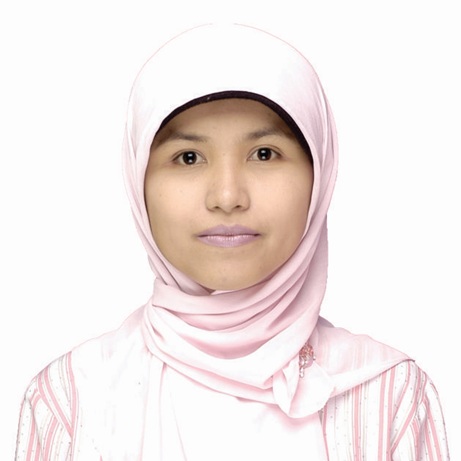THIRD-YEAR HEALTH PROFESSIONS STUDENTS’ INTERPROFESSIONAL EDUCATION IN THE COMMUNITY SETTING: WHAT DID THEY EXPERIENCE?
Siti Rokhmah Projosasmito(1*), Rilani Riskiyana(2), Supriyati Supriyati(3)
(1) Deparment of Medical Education and Bioethics, Faculty of Medicine, Public Health, and Nursing Universitas Gadjah Mada
(2) Deparment of Medical Education and Bioethics, Faculty of Medicine, Public Health, and Nursing Universitas Gadjah Mada
(3) Department of Health Behaviour, Environment, and Social Medicine
(*) Corresponding Author
Abstract
Background: Learning by experiencing a real situation is believed to be more powerful than using simulation. This hypothesis is also applied to interprofessional learning for students in health professions education. Learning to collaborate and practice students' knowledge of health care in a community became the purpose of the community and family health care (CFHC) program in the Faculty of Medicine, Public Health and Nursing, Universitas Gadjah Mada.
Aim: To describe the third-year students’ experiences of learning interprofessional collaboration in a community setting based on their activity report.
Case Discussion: The CFHC team created a particular design for third-year students, focused on community health problems rather than family health problems. The groups conducted focus group discussions to explore health issues and to decide together with the community the main problem that would be given intervention. The groups documented the entire process through a written report, video, and an article about their intervention outcome.
Conclusion: The reports showed that students were able to demonstrate interprofessional practice in solving health problems in the community. They learned to work as an interprofessional team while experiencing it. Thus, conducting community-based IPE for undergraduate students is necessary to develop interprofessional collaboration competencies.
Keywords
Full Text:
PDFReferences
- World Health Organization. Framework for action on interprofessional education and collaborative practice.https://apps.who.int/iris/bitstream/handle/10665/70185/WHO_HRH_HPN_10.3_eng.pdf. Published 2010. Accessed November 20, 2018.
- Interprofessional Education Collaborative. Core competencies for interprofessional collaborative practice: 2016 update. Washington, DC: Interprofessional Education Collaborative.
- Riskiyana R, Claramita M, Rahayu GR. Objectively measured interprofessional education outcome and factors that enhance program effectiveness: a systematic review. Nurse Educ Today. 2018;66:73-78.
- Stubbs C, Schorn MN, Leavell JP, et al. Implementing and evaluating a community-based, inter-institutional, interprofessional education pilot programme. J Interprof Care. 2017;31(5):652-655.
- Ryan M, Vanderbilt AA, Mayer SD, Gregory A. Interprofessional education as a method to address health needs in a Hispanic community setting: a pilot study. J Interprof Care. 2015;29(5):515-517.
- Stone N, McNair R. The time is RIPE for community-based interprofessional education. Talk presented at: 7th National Rural Health Conference, March 1-3, 2003; Hobart, Tasmania.https://www.ruralhealth.org.au/7thNRHC/Papers/refereed%20IO%20papers/stone.pdf. Accessed October 1, 2019.
- Rhoda A, Laattoe N, Smithdorf G, Roman N, Frantz J. Facilitating community-based interprofessional education and collaborative practice in a health sciences faculty: Student perceptions and experiences. Afr J Health Prof Educ. 2016;8(2):225-228.
- Rotz ME, Dueñas GG, Zanoni A, Grover AB. Designing and evaluating an interprofessional experiential course series involving medical and pharmacy students. Am J Pharm Edu. 2016;80(5):85.
- Reeves S. Community‐based interprofessional education for medical, nursing and dental students. Health Soc Care Community. 2000;8(4):269-276.
- CFHC-IPE team. Community and family health care with interprofessional education (CFHC-IPE) module third year: community health. Yogyakarta, Indonesia: FMPHN UGM; 2018.
- Creswell JW, Creswell JD. Research design: qualitative, quantitative, and mixed methods approaches. 5th ed. California, USA: Sage publications; 2017.
- Claramita M, Riskiyana R, Susilo AP, Huriyati E, Wahyuningsih MS, Norcini JJ. Interprofessional communication in a socio-hierarchical culture: development of the TRI-O guide. J Multidiscip Healthc. 2019;12:191-204.
- Kim SJ, Kwon OD, Kim KH, et al. Investigating the effects of interprofessional communication education for medical students. Korean J Med Educ. 2019;31(2):135-145.
- Kirkpatrick D, Kirkpatrick J. Evaluating training programs: the four levels. 3rd ed. California, USA: Berrett-Koehler Publishers; 2006.
- Asmara, F. Y., Bakri, S., Dewi, D. P., Afifah, D. N., & Kristina, T. N. Implementation of interprofessional education in community setting. JCOEMPH. 2019;2(2):222-228.
- Mennin S, Petroni-Mennin R. Community-based medical education. Clin Teach. 2006;3(2):90-6
- LeGros TA, Amerongen HM, Cooley JH, Schloss EP. Using learning theory, interprofessional facilitation competencies, and behavioral indicators to evaluate facilitator training. J Interprof Care. 2015;29(6):596-602.
Article Metrics
Refbacks
- There are currently no refbacks.
Copyright (c) 2022 Siti Rokhmah Projosasmito, Rilani Riskiyana, Supriyati Supriyati

This work is licensed under a Creative Commons Attribution-ShareAlike 4.0 International License.
Jurnal Pendidikan Kedokteran Indonesia (The Indonesian Journal of Medical Education) indexed by:
JPKI Stats







